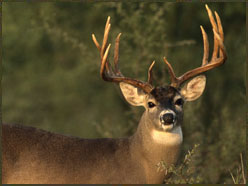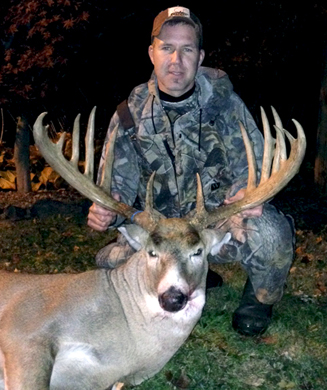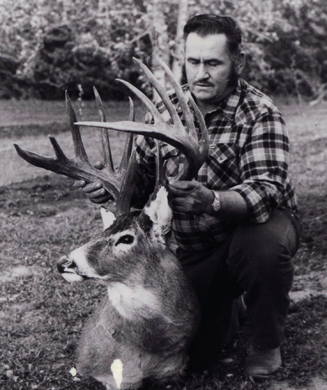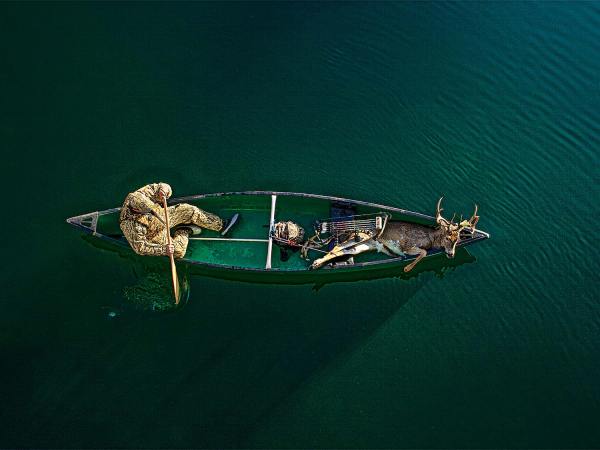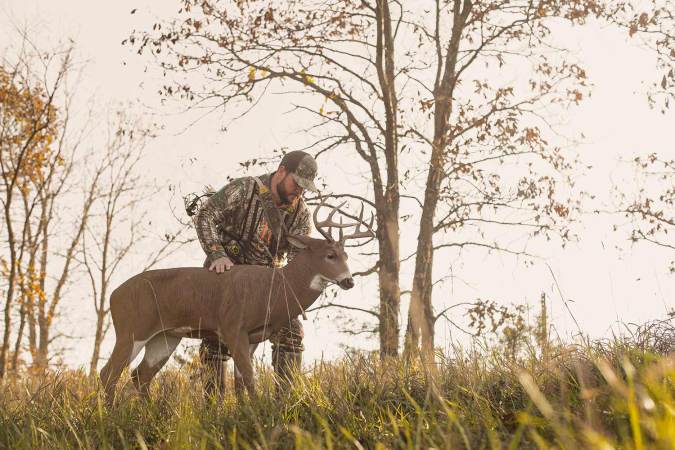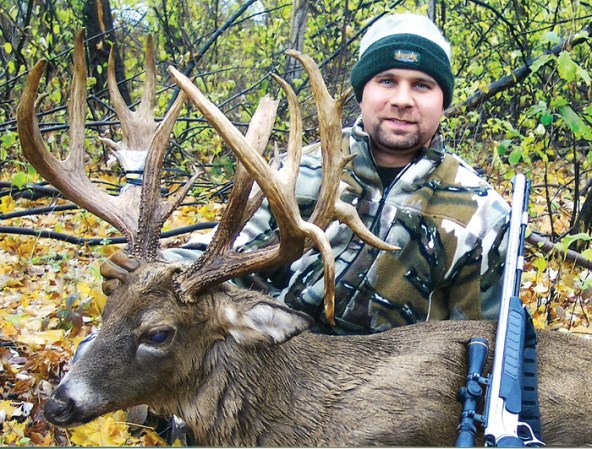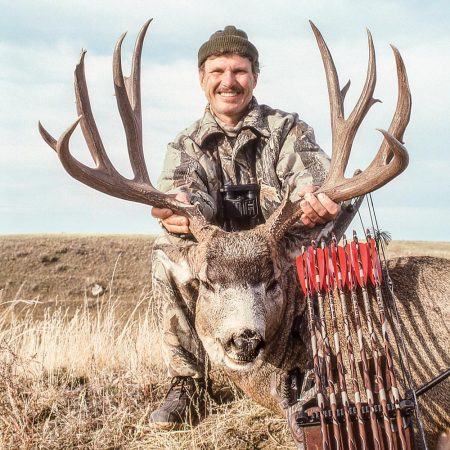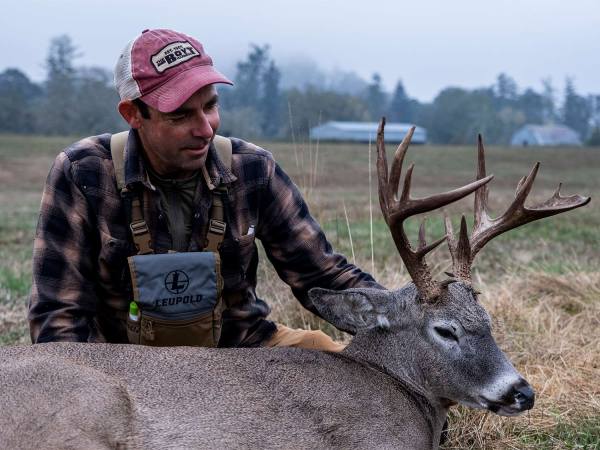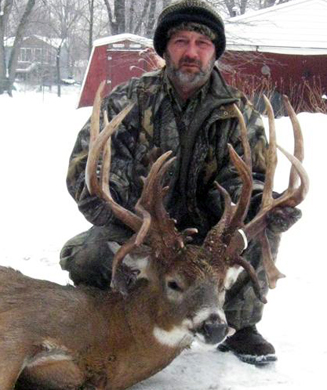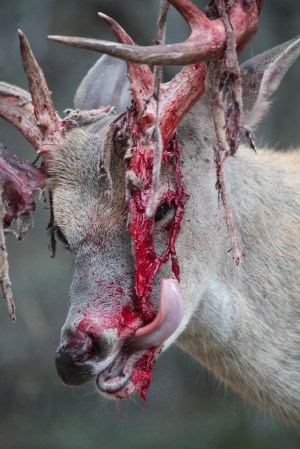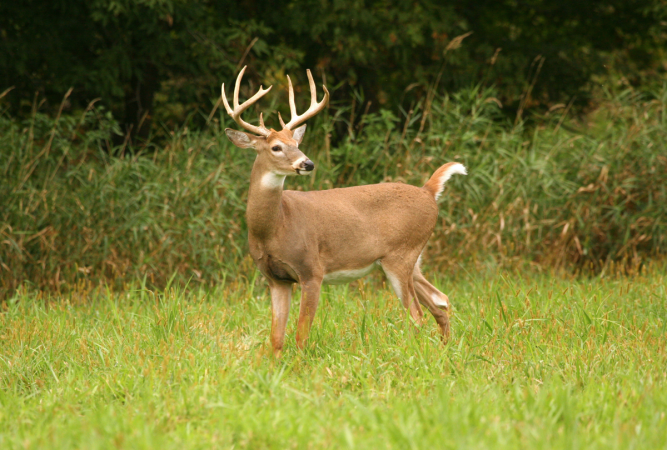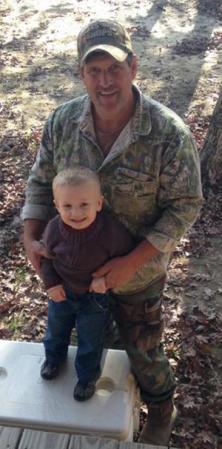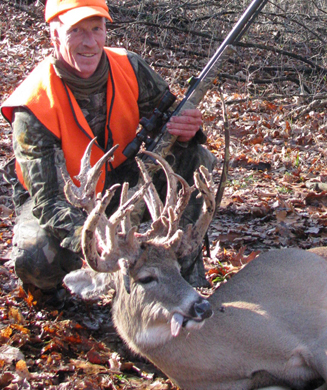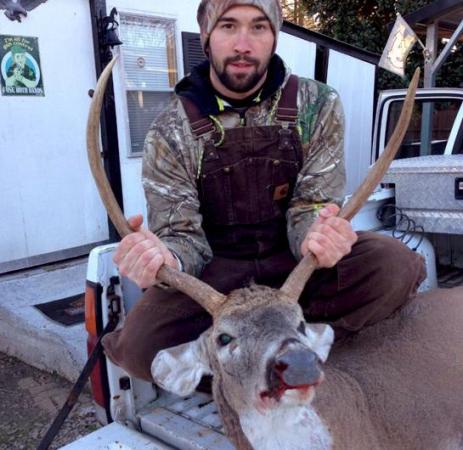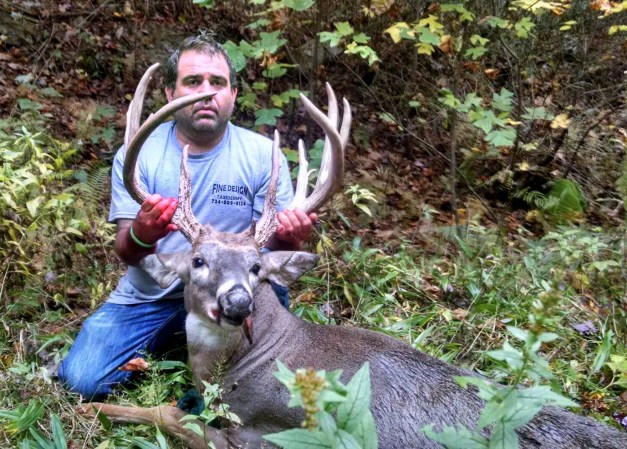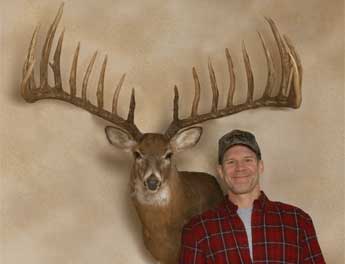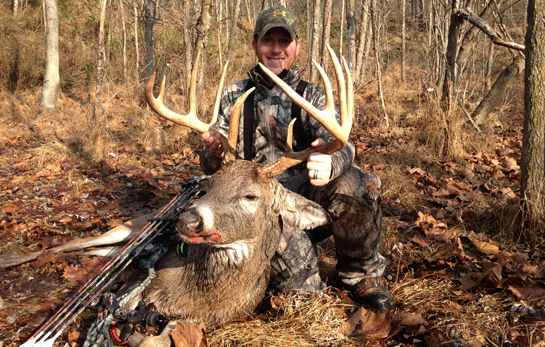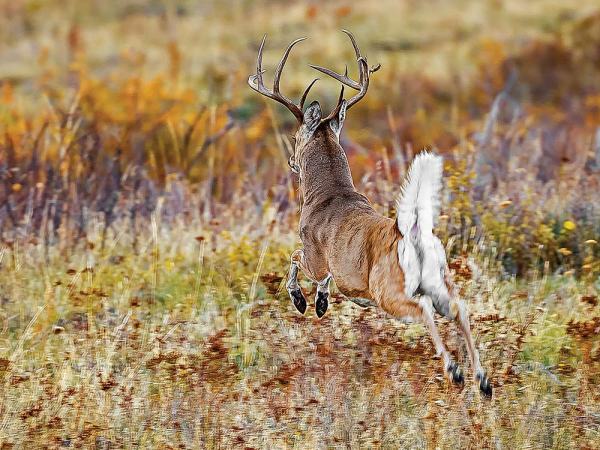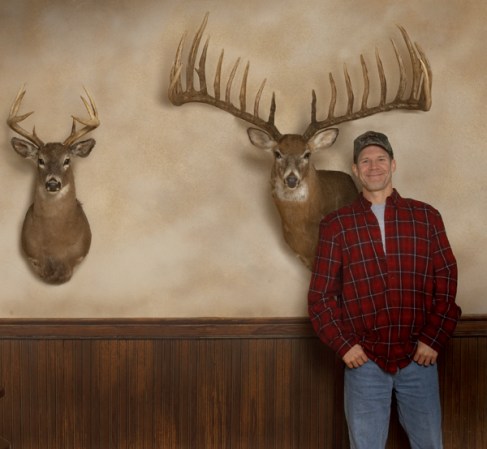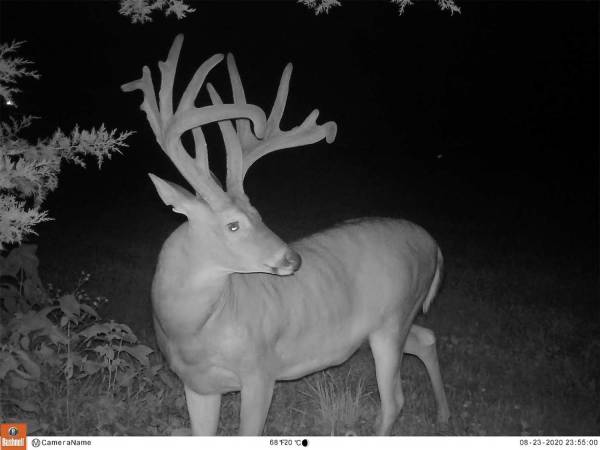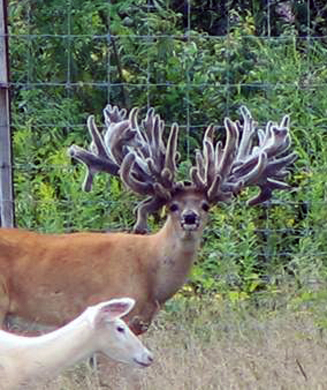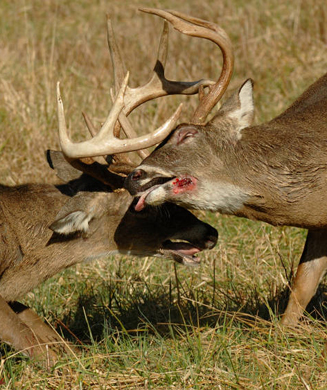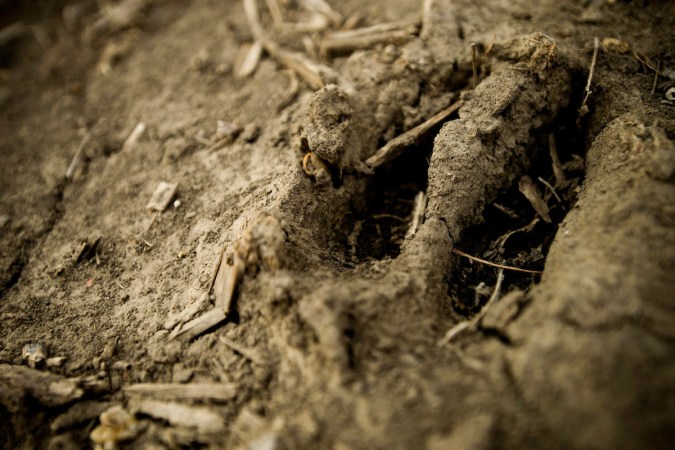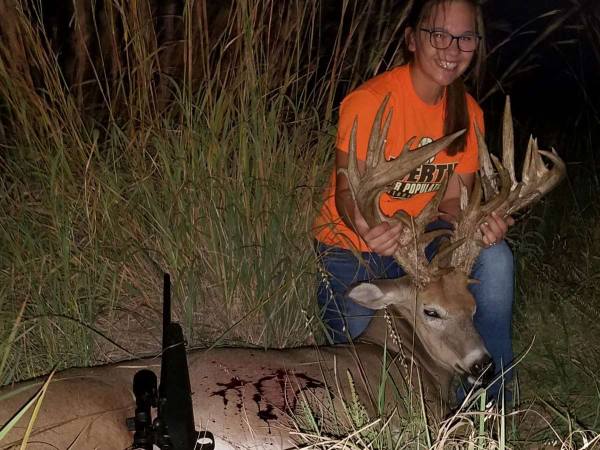Somewhere in the back of our minds, in what Jung called man’s “collective unconscious,” we carry ancestral, saber-toothed memories of things that want to kill us. Niggling thoughts of great carnivores make us wonder what might be watching and waiting in the shadows as we huddle around our dying campfires. On the other hand, not everything that comes for you intends to eat you, nor does it always come at night.
On a dry, dusty day in late October, Ron Smith and his nephew Aric Alvarez trudged along the Trinity River upriver from Vance’s Camp, a well-known gathering place for North Texas fishermen. The walk was tiring, but finally the pair reached their destination, a brush-shrouded bend about two miles downriver from Eagle Mountain Reservoir. It was the kind of crappie hole that was worth a long hike. Smith baited up and sat back in the grass, more interested in solitude than fishing. Alvarez went upstream to cast for bass.
A half-hour later, Smith was on the brink of a serious nap when he was roused by the sound of something moving in the brush. Thinking Alvarez had returned, he sat up and was surprised to see a nine-point buck eyeing him from the far side of the river, scarcely 20 yards away. Smith and the whitetail watched each other for several seconds; then the deer stepped into the river and began to swim toward the fisherman. Smith had never seen such a buck so near in the wild and hoped that the animal would swim closer and give him an even better look. Smith didn’t realize just how close a look he was about to get.
The deer crossed the river and clambered out, shaking itself like a dog. Just 10 yards away now, the whitetail turned and looked straight at Smith as if seeing him for the first time. It stretched its nose toward him and sniffed the air. Suddenly, its demeanor changed from one of simple curiosity to one of pure malevolence. The deer’s ears, previously cupped forward, swiveled back flat along the animal’s neck. As Smith watched, every hair on the whitetail’s body seemed to bristle. The buck’s head dropped slightly and cocked to one side as the deer stared balefully at Smith through slitted eyelids. The angler sensed he was in danger and for some reason remembered the date: October 31, Halloween. Trick or treat.
The buck pawed the ground once, dropped its head low and charged Smith with astonishing speed. Smith tried to get up from the ground to run and was halfway to his feet when the crazed animal smashed into him. He fell backward into the river, reflexively grabbing the antlers and pulling the whitetail in after him. Momentum carried man and deer deep beneath the water. Smith clawed to the surface, sputtering muddy water as the buck bobbed up scant feet away. Smith gained the shore first and clambered out. He figured the impromptu dunking might have made the buck remember that it was a deer, and not a Cape buffalo, but no such luck. The whitetail climbed out seconds behind the shivering man and was on him again in a flash.
The impact of the second charge slammed Smith to the ground and onto his back, knocking the wind out of him. The buck pressed the charge, stabbing at the man’s face with the brush-honed spikes on its head. Smith grabbed a double fistful of antler and hung on. He didn’t realize until too late that he had seized an antler tip. The buck’s next lunge drove the point of the right main beam through the palm of his left hand and into the ground. Smith tore his hand off of the spike and scooted from under the buck. Struggling to his feet, he shifted his grip on the antlers and somehow managed to bulldog the nine-pointer to the ground.
A Near Thing
Alvarez was out of sight around the bend when he heard his uncle’s cries and the subsequent splashing. Figuring Smith had accidentally fallen into the river, he dropped his pole and ran to help. A whirlwind of flying dust and flailing arms and legs greeted Alvarewhen he crashed out of the brush and onto the scene. He sized up the situation and ran in to deliver the hardest kick he could muster to the buck’s ribs. The deer didn’t flinch. Alvarez looked around for a weapon and found a large tree limb. Smith looked up just as Alvarez was about to swing the club down on the buck’s head, which was within inches of his own. “For heaven’s sake, don’t kill me!” he screamed.
Realizing that he might further injure his bleeding uncle, the teenager cast the limb aside. Frantic with concern that his uncle was about to be gored, Alvarez tried unsuccessfully to pry off the buck. He was about to give the club another try when he recalled that Smith wore a fillet knife on his belt. Careful to avoid the buck’s slashing hooves and antlers, Alvarez reached beneath the embattled man for the knife. Smith held on while Alvarez cut the buck’s throat and didn’t let go until he was sure the animal was dead.
Finally, Smith rolled away from the buck and rested on the trampled grass while he regained his breath. Although Smith didn’t know how badly he was injured, he was covered in blood-his and the buck’s-and experienced severe pain in his hand, ribs and abdomen. Just as the first waves of shock set in, Smith instructed Alvarez to go back to Vance’s for help, then lapsed into semi-consciousness.
Other than considerable blood loss, Smith’s most serious injuries were the hole in his left hand and a few bruised ribs.
An isolated case of an animal bypassing its genetic code and going berserk? Hardly. Such run-ins with whitetail bucks, though aberrations, are more common than you might think. On average, several people are attacked each year by bucks. And an aroused, mature buck weighing 150 pounds or so is a savage force.
Crazy in Love
Most biologists attribute attacks by bucks to rut behavior. Rutting bucks routinely destroy everything from saplings to concrete lawn ornaments as they vent hormone-heated steam. A case that took place two years ago in Illinois serves as a classic example. Paul Cheatham, 61, was scouting for deer on his farm near Herrin one November day when he came upon a six-point buck that was wooing a doe. The deer didn’t seem to be particularly alarmed by the man’s presence and continued to gambol about in front of him. Watching the animals interact, Cheatham was amazed when the buck left the doe and started moving toward him, sniffing his trail as it came. When the buck got to within six feet, Cheatham’s curiosity was transformed into concern. He was one step into backing away when the buck snorted, dropped its head and charged.
Like most living members of the “Bashed-by-Bambi Club,” Cheatham grabbed antlers and held on. The buck tossed him around for quite a while before the man remembered his pocketknife. Holding onto an antler with one hand, the man reached into his pocket with his free hand and got the knife, opened it with his teeth, then repeatedly stabbed the buck’s neck and chest until it lay still.
While the Cheatham case involved a wild deer in a rural setting, whitetails whose habitat overlaps that of suburban homeowners are more frequently the offenders. Last November, for example, a buck attacked a 61-year-old woman while she was hanging laundry in her backyard in Durham, N.C. A neighbor, John Hughes, who ran to investigate her screams, said he saw the buck toss the woman in the air and repeatedly gore her legs. He finally drove the deer away and summoned an ambulance.
Sometimes deer take the initiative in what some might call preemptive strikes. A few years ago, Raymond Rebels was hunting near Garrison, Tex., when a buck boiled out of the brush and nailed him in a sneak attack from behind. Rebels, his rifle jarred from his grasp, wrestled with the deer for some time and finally climbed a tree to get away. While self-preservation by flight is the whitetail’s normal course of action unless cornered, the onset of the rut apparently can make at least some bucks feel 10 feet tall.
Testosterone run amok is a handy, catchall rationale to explain why some whitetails go after humans. Yet bucks don’t follow form in all instances.
In June 1994 (a long time from rutting season), a velvet-antlered buck nearly killed a Texas woman in her driveway. A passerby saw the unconscious woman within minutes of the attack and called authorities. He couldn’t render immediate aid to the victim, because the buck stood guard over her. A Brazos River Authority ranger, Mike Cox, had to kill the buck before paramedics could tend to the injured woman. She survived with multiple lacerations, bruises, a concussion and several broken bones.
Unprovoked whitetail attacks unrelated to the rut are not regional phenomena. Incidents of varying severity have occurred in most U.S. states and Canadian provinces with whitetail populations. Last March, 21-year-old Brian Keister engaged a seven-point whitetail in hand-to-antler combat after it charged him during a coyote hunt near Beavertown, Penn. The hunter had laid his .22 rifle aside prior to the attack. Keister told investigators he heard something coming through the brush and saw the deer, which immediately charged and “threw me all over the place.”
Keister grabbed the buck’s headgear to avoid puncture wounds. After a prolonged shoving match, Keister finally managed to break away and scramble the 10 yards to his rifle. He was able to get off one hurried shot that inflicted a minor flesh wound, but the deer stopped long enough to give Keister the opportunity to escape. Wildlife conservation officer Harold Malehorn later encountered the bizarre- acting buck and killed it not 40 yards from the attack scene. It took six hours of surgery to patch Keister’s injuries.
It Gets Weirder
Rare as fatal buck assaults are, more exceptional are those incidents that involve bucks staying on the scene long after their victims are dead. It is not unheard of for non-carnivores to guard their “kills.” Last year, an Asian elephant that had killed a forest ranger in India carried around the body for two weeks before relinquishing it. The few dozen wildlife biologists and ethologists I quizzed regarding such behavior answered with a collective shrug.
In the fall of 1990, central Texas sheriff’s deputies investigated a van that, according to a citizen’s report, had been parked beside the road for two days with its driver-side door open. On exiting the patrol car, the law officers noticed a large buck in the brush about 10 yards from the van, thrashing a sapling with its antlers. As the deputies approached the vehicle, the buck charged them.
The deputies backed off and the buck did likewise, but it would not allow them to get near the van. Reconnoe of action unless cornered, the onset of the rut apparently can make at least some bucks feel 10 feet tall.
Testosterone run amok is a handy, catchall rationale to explain why some whitetails go after humans. Yet bucks don’t follow form in all instances.
In June 1994 (a long time from rutting season), a velvet-antlered buck nearly killed a Texas woman in her driveway. A passerby saw the unconscious woman within minutes of the attack and called authorities. He couldn’t render immediate aid to the victim, because the buck stood guard over her. A Brazos River Authority ranger, Mike Cox, had to kill the buck before paramedics could tend to the injured woman. She survived with multiple lacerations, bruises, a concussion and several broken bones.
Unprovoked whitetail attacks unrelated to the rut are not regional phenomena. Incidents of varying severity have occurred in most U.S. states and Canadian provinces with whitetail populations. Last March, 21-year-old Brian Keister engaged a seven-point whitetail in hand-to-antler combat after it charged him during a coyote hunt near Beavertown, Penn. The hunter had laid his .22 rifle aside prior to the attack. Keister told investigators he heard something coming through the brush and saw the deer, which immediately charged and “threw me all over the place.”
Keister grabbed the buck’s headgear to avoid puncture wounds. After a prolonged shoving match, Keister finally managed to break away and scramble the 10 yards to his rifle. He was able to get off one hurried shot that inflicted a minor flesh wound, but the deer stopped long enough to give Keister the opportunity to escape. Wildlife conservation officer Harold Malehorn later encountered the bizarre- acting buck and killed it not 40 yards from the attack scene. It took six hours of surgery to patch Keister’s injuries.
It Gets Weirder
Rare as fatal buck assaults are, more exceptional are those incidents that involve bucks staying on the scene long after their victims are dead. It is not unheard of for non-carnivores to guard their “kills.” Last year, an Asian elephant that had killed a forest ranger in India carried around the body for two weeks before relinquishing it. The few dozen wildlife biologists and ethologists I quizzed regarding such behavior answered with a collective shrug.
In the fall of 1990, central Texas sheriff’s deputies investigated a van that, according to a citizen’s report, had been parked beside the road for two days with its driver-side door open. On exiting the patrol car, the law officers noticed a large buck in the brush about 10 yards from the van, thrashing a sapling with its antlers. As the deputies approached the vehicle, the buck charged them.
The deputies backed off and the buck did likewise, but it would not allow them to get near the van. Reconno
